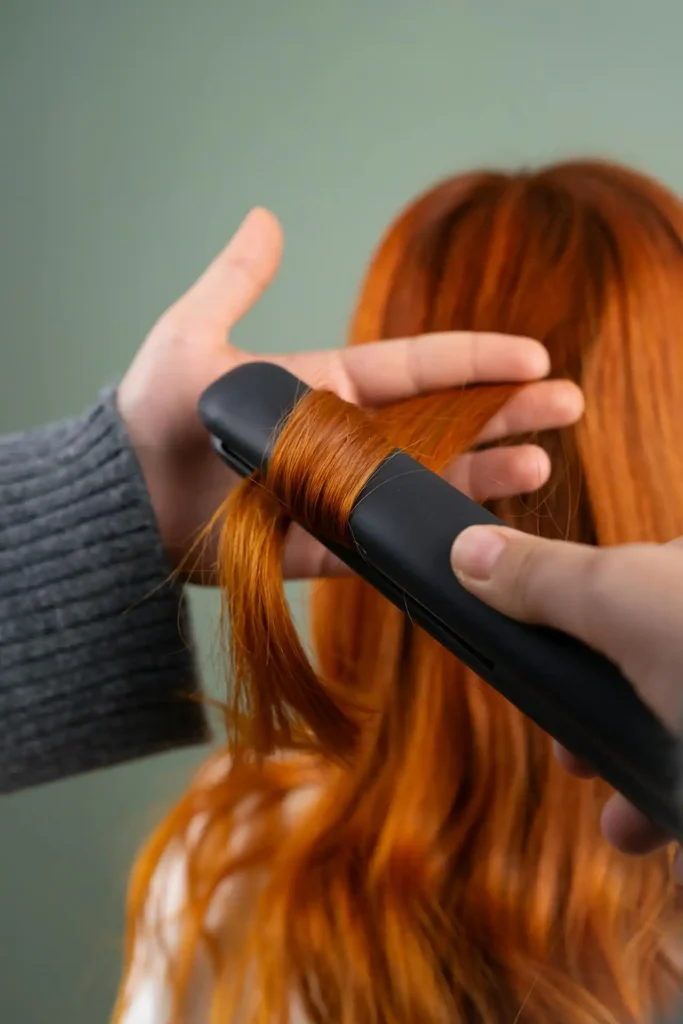Say Goodbye to Split Ends with This DIY Treatment
Split ends can turn your beautiful hair into a frizzy nightmare. You don’t need expensive salon treatments to fix this common problem.
With simple ingredients from your kitchen, you can restore your hair’s health and say goodbye to those pesky split ends for good.
Understanding What Causes Split Ends

Your hair endures daily stress that weakens its protective outer layer. Chemical treatments also wreak havoc on your hair structure.
Heat styling tools create the most damage when you use them frequently without proper protection. Blow dryers, flat irons, and curling wands strip moisture from your hair shaft.
Hair dyes, perms, and relaxers break down the protein bonds that keep your hair strong. Even seemingly gentle treatments can cause damage when applied repeatedly.
Environmental factors play a significant role in split end formation. Sun exposure, wind, and pollution create oxidative stress that weakens your hair.
Swimming in chlorinated pools strips away natural oils that protect your hair from damage.
Your daily hair care routine might contribute to the problem. Brushing wet hair aggressively tears the weakened strands.
Sleeping on rough cotton pillowcases creates friction that leads to breakage and splits.
Recognizing the Signs of Split Ends
You can easily identify split ends by examining your hair closely. Split ends often feel rough and dry when you run your fingers along the hair shaft.
Hold a section of hair up to the light and look for strands that appear frayed at the tips. Healthy hair ends look smooth and uniform in color.
Your hair may tangle more easily than usual, especially at the ends. You might notice that your hair looks dull and lacks its natural shine.
Different types of splits require different approaches. Some splits occur higher up the hair shaft, not just at the ends.
The classic Y-shaped split occurs when the hair shaft divides into two parts. Tree splits create multiple branches from a single point, resembling tiny trees.
These mid-shaft splits indicate severe damage that needs immediate attention. White dots along the hair strand signal weak points that will likely split soon.
The Ultimate DIY Honey and Coconut Oil Treatment
This powerful combination repairs existing damage while preventing future splits.
Honey acts as a natural humectant that draws moisture into your hair shaft. Its antibacterial properties also cleanse your scalp and promote healthy hair growth.
Coconut oil penetrates the hair cuticle better than most other oils. Its molecular structure allows it to fill in gaps where the cuticle has been damaged.
This creates a protective barrier that prevents further moisture loss. Gather two tablespoons of raw honey and three tablespoons of virgin coconut oil.
Warm the coconut oil slightly if it’s solid, but don’t make it hot enough to burn your scalp. Mix both ingredients thoroughly until you achieve a smooth consistency.
Apply this mixture to damp hair, focusing on the mid-lengths and ends. Avoid the roots unless your scalp is particularly dry.
Work the treatment through your hair with your fingers or a wide-tooth comb. Cover your hair with a shower cap or plastic wrap to create heat that helps the treatment penetrate deeper.
Leave it on for at least 30 minutes, though overnight treatments provide even better results. Rinse thoroughly with lukewarm water, then shampoo gently.
Egg and Avocado Protein Mask
Your hair needs protein to rebuild damaged areas and strengthen weak spots. Avocados contain healthy fats and vitamins that nourish damaged hair.
Eggs provide complete proteins that mirror the structure of your natural hair. The lecithin in egg yolks helps seal the hair cuticle for smoother, shinier results.
Their creamy texture makes them easy to apply and helps other ingredients adhere better. The natural oils in avocados provide deep conditioning benefits.
Mash one ripe avocado until completely smooth, removing any lumps that might tangle in your hair. Leave the mask on for 20-30 minutes under a shower cap.
Beat one whole egg and mix it thoroughly with the mashed avocado. Add one tablespoon of olive oil for extra moisture.
Apply this mixture to clean, damp hair from root to tip. Pay special attention to areas where you see the most damage. The natural proteins will fill in microscopic gaps in your hair shaft.
Rinse with cool water first to prevent the egg from cooking, then follow with your regular shampoo routine. Use this treatment once a week for best results.
Apple Cider Vinegar Rinse for Cuticle Smoothing

Apple cider vinegar restores your hair’s natural pH balance, which becomes disrupted by chemical treatments and hard water.
The acidic nature of vinegar smooths the hair cuticle, reducing tangles and breakage that lead to splits.
This rinse removes product buildup that weighs down your hair and prevents nutrients from penetrating.
Clean hair absorbs conditioning treatments more effectively, making your DIY repairs more successful. The vinegar also adds incredible shine to dull, damaged hair.
Mix one part apple cider vinegar with three parts water in a spray bottle. Apply this rinse after shampooing but before conditioning.
Use filtered water if your tap water is particularly hard or chlorinated. Add a few drops of essential oil like lavender or rosemary to improve the scent.
Spray it evenly through your hair, focusing on the lengths rather than the scalp. Let it sit for 2-3 minutes before rinsing with cool water.
Mayonnaise Deep Conditioning Treatment
Mayonnaise contains eggs, oil, and vinegar – a perfect combination for repairing split ends. The emulsified fats penetrate deeply into damaged hair shafts.
This treatment works especially well for severely damaged or chemically processed hair. The protein in mayonnaise helps rebuild the hair’s structure from the inside out.
The oils provide intense moisture that makes your hair more flexible and less prone to breaking. Vinegar smooths the cuticle for added shine and manageability.
Use full-fat mayonnaise rather than light versions for maximum benefits. Leave the treatment on for 45 minutes to an hour.
Apply a generous amount to damp hair, working it through from mid-length to ends. Focus on the most damaged areas where splits are visible.
Wrap your hair in plastic wrap and cover with a warm towel to enhance penetration. Shampoo twice to remove all traces of the mayonnaise, then condition as usual.
Prevention Strategies for Long-Term Hair Health
Preventing split ends proves more effective than trying to repair them after they form. Keep temperatures below 350°F and use the lowest effective setting for your hair type.
Change your hair care routine to minimize damage from daily styling and maintenance. Small adjustments make significant differences in your hair’s overall health.
Reduce heat styling to no more than twice per week when possible. When you do use heat tools, apply a protective spray first.
Sleep on silk or satin pillowcases to reduce friction while you toss and turn. These smooth fabrics don’t grab your hair like cotton does.
You can also wrap your hair in a silk scarf or use a satin bonnet for extra protection. Trim your hair every 6-8 weeks to remove damaged ends before they split further up the shaft.
Regular trims maintain your hair’s shape while preventing minor damage from becoming major problems. Don’t wait until splits are visible to schedule your next cut.
Choosing the Right Tools and Products
Your hair tools and products significantly impact split end formation. Replace old brushes with ones designed for your hair type.
Boar bristle brushes distribute natural oils without causing damage, while wide-tooth combs work best for detangling wet hair.
Invest in quality heat protectant products that create a barrier between your hair and styling tools.
Look for products containing silicones or proteins that coat the hair shaft. Apply these products to damp hair before blow-drying or using other heat tools.
Choose sulfate-free shampoos that clean without stripping essential oils. These gentler formulas maintain your hair’s natural moisture balance.
Follow with a conditioner that contains proteins or ceramides to strengthen damaged areas. Leave-in treatments provide ongoing protection throughout the day.
Look for products with ingredients like argon oil, keratin, or silk proteins. Apply these to damp hair before styling for maximum effectiveness.
When to Seek Professional Help
Sometimes DIY treatments aren’t enough to address severe damage. If your hair continues breaking despite consistent care, consider consulting a professional stylist.
They can assess your hair’s condition and recommend targeted treatments. A dermatologist can help identify potential causes beyond external damage.
Chronic split ends might indicate underlying health issues or nutritional deficiencies. Your hair reflects your overall health, so persistent problems warrant investigation.
Professional treatments like keratin smoothing or protein reconstructions might be necessary for severely damaged hair.
These salon services use stronger ingredients and specialized application techniques. They can provide a foundation for your at-home maintenance routine.
Mid-shaft splits, excessive breakage, or hair that won’t respond to treatments require expert evaluation.
Early intervention prevents minor problems from becoming major hair disasters. Don’t ignore signs that your hair needs professional attention.
Maintaining Results Long-Term

Consistency makes the difference between temporary improvement and lasting hair health.
Create a weekly routine that includes deep conditioning treatments and protective measures. Your hair will gradually become stronger and more resistant to damage.
Track your progress by taking photos of your hair ends every few weeks. This helps you see improvements that might not be obvious day-to-day.
Document which treatments work best for your specific hair type and damage patterns. Adjust your routine seasonally to address changing environmental challenges.
Winter air requires more moisture, while summer sun demands extra UV protection. Your hair’s needs change throughout the year, so flexibility is key.
Conclusion
With these DIY treatments and prevention strategies, you can transform damaged hair into healthy, split-end-free locks.
Consistency and patience will reward you with stronger, more beautiful hair.







